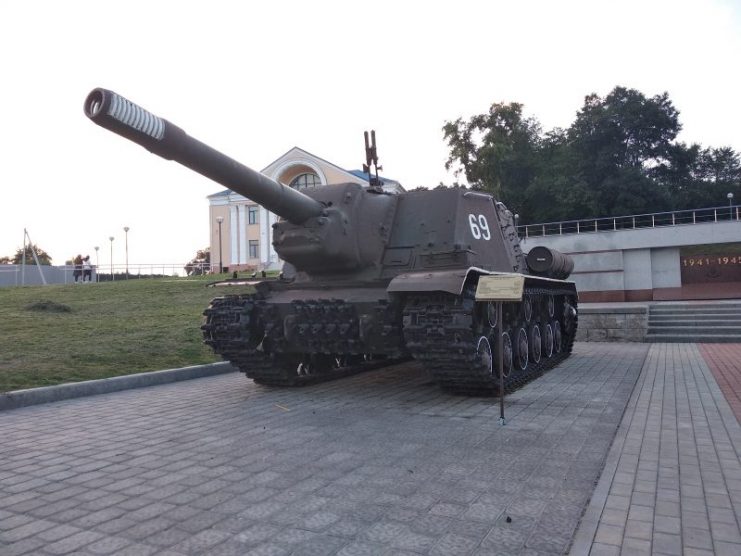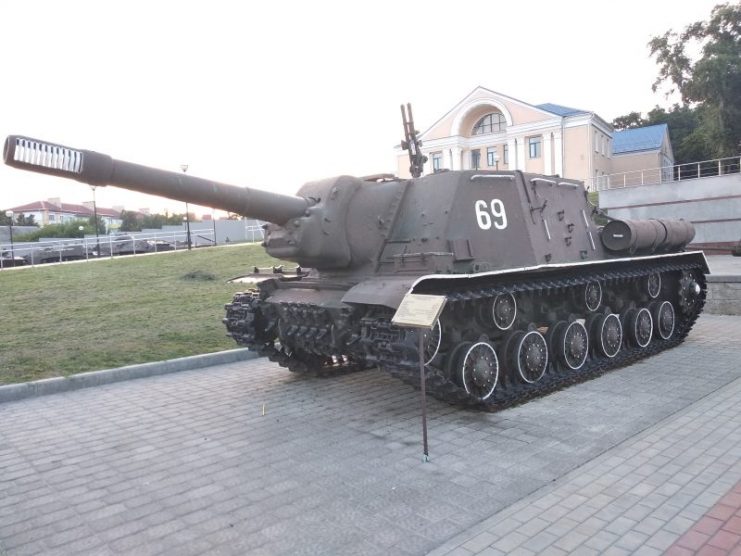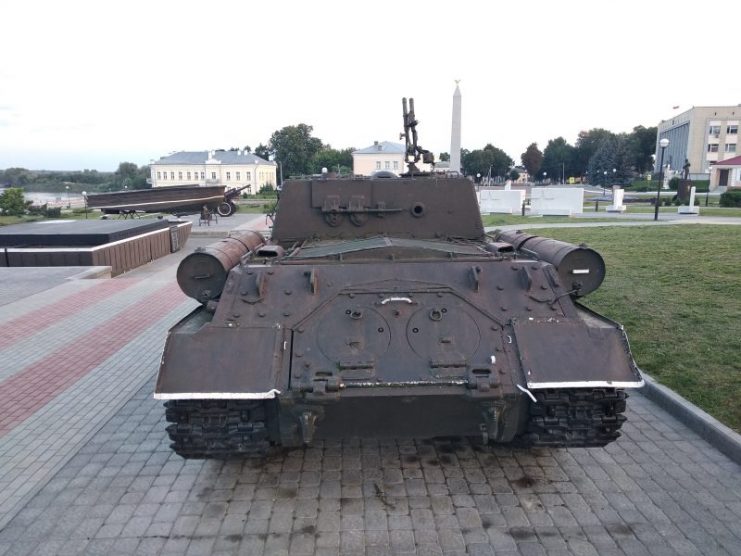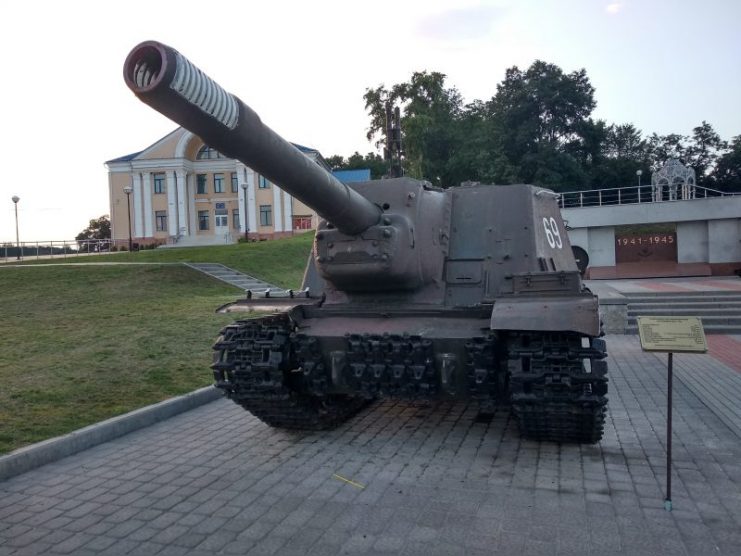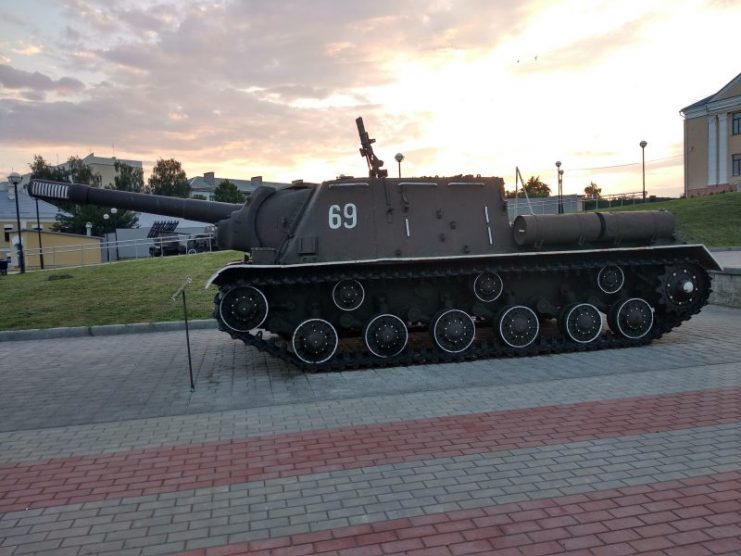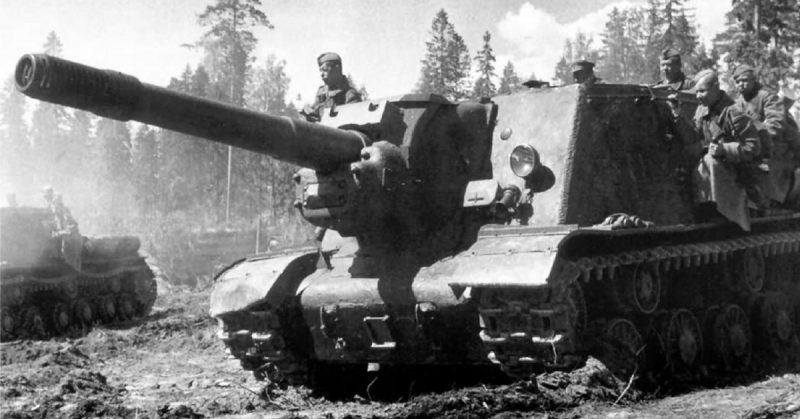Object 241 or ISU-152 was a Soviet heavy self-propelled artillery vehicle during the Second World War. The designation “ISU” stands for self-propelled installation, created on the basis of the IS tank. Tankers called the ISU-152 “Зверобой” or Killer of Beasts. This title was inherited from its predecessor the SU-152.
The creation of the Object 241/ISU-152 began in June 1943 in Design Bureau No. 100 in the city of Chelyabinsk. The basis for the creation of it was the need of the Red Army for mobile infantry support and assault weapons. In addition, the KV-1s tank was withdrawn from production, and the SU-152 self-propelled gun (which was created on the basis of KV-1s) was required to be updated.
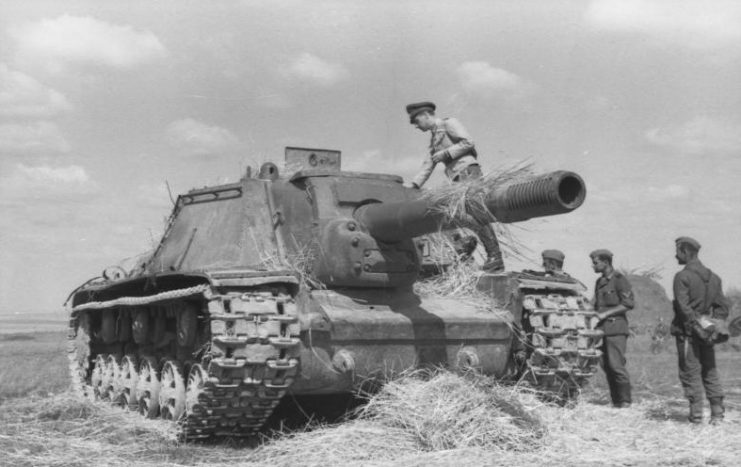
The head of the development was the chief developer of the entire Soviet line of heavy tanks, Josef Yakovlevich Kotin. The main designer of the ISU-152 was GN Moskvin. In early 1944, the ISU-152 completely replaced its predecessor SU-152 on assembly lines.
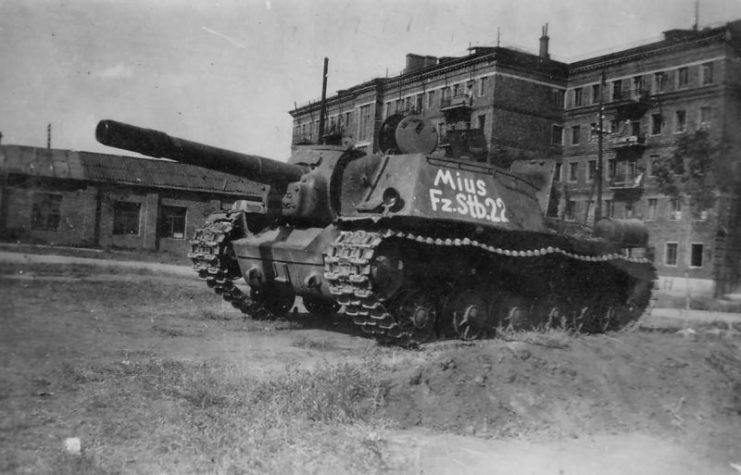
The ISU-152 was used mainly for fire support of infantry and tanks. Thanks to a 6-inch (152.4-mm) ML-20S gun and a powerful high-explosive fragmentation projectile equipped with 6 kilograms of TNT, one round was enough to destroy a small house.
It’s power made it effective in destroying fortifications, trenches and enemy equipment. However, the low accuracy and reload times were weak sides. Fortunately, the low accuracy was often compensated for by its incredible firepower.
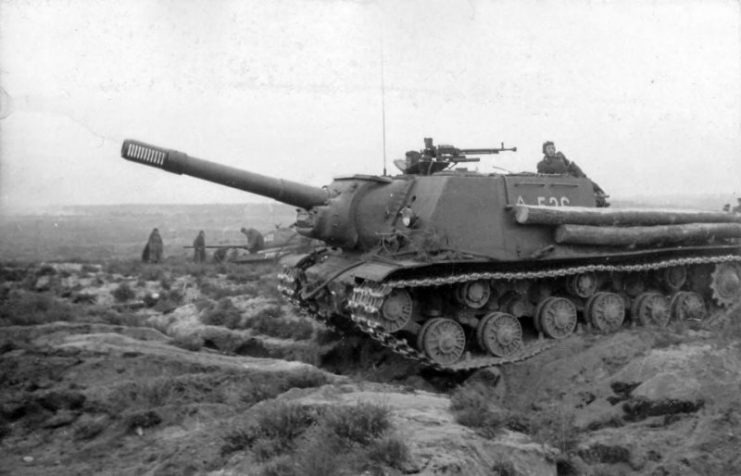
An excerpt from the memoirs of tanker Dmitry Fyodorovich Loza:
«… I ordered the commander of the ISU-152 battery to immediately suppress the enemy firing point. The self-propelled gun, slapping on the asphalt with wide caterpillars, took a position on one of the streets facing the southeast side of the square…
… A shot of the large-caliber gun was heard. The air shook violently. One and a half stories of the building, together with the enemy anti-tank gun and its crew, collapsed to the ground.
… from the powerful shockwave of the explosion, thick glass in the houses of the district were shattered. Their heavy fragments fell on the heads of the “spectators”, as a result, the hands and backs of ten people were injured, and in two, collarbones were broken …»
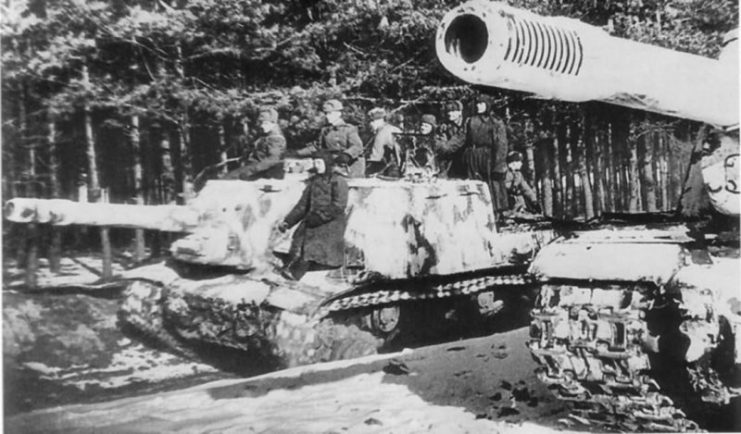
The armor of the ISU-152 consisted of frontal armored plates 90 mm thick located at an angle of 30°. This armor protected it from the German Pak 40 anti-tank guns at a distance of more than 800 meters. Its ease of repair and use were additional benefits.
The biggest drawback was a small ammunition load of 20 shots. Loading new ammunition required more than 40 minutes and was a time-consuming process. The reason for this was the enormous size of the shells. The initial location of the fuel tanks inside the fighting compartment also created a high probability of fire.
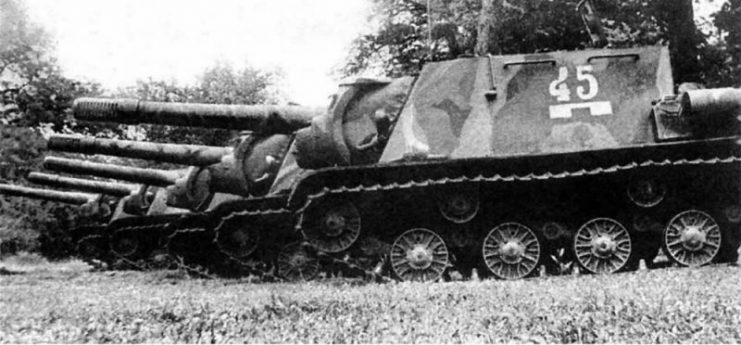
The ISU-152 ammunition kit included:
- Armor-piercing tracer projectile 53-BR-540 at 48.8 kg with an initial velocity of 600 m/s. In some cases, instead of these projectiles, tracer blunt shells with a 53-BR-540B ballistic tip were used beginning in 1945.
- High-explosive shell 53-OF-540 at 43.56 kg with an initial velocity of 655 m/s on full charge.
- It’s typical loadout was 13 HE rounds and 7 AP rounds.
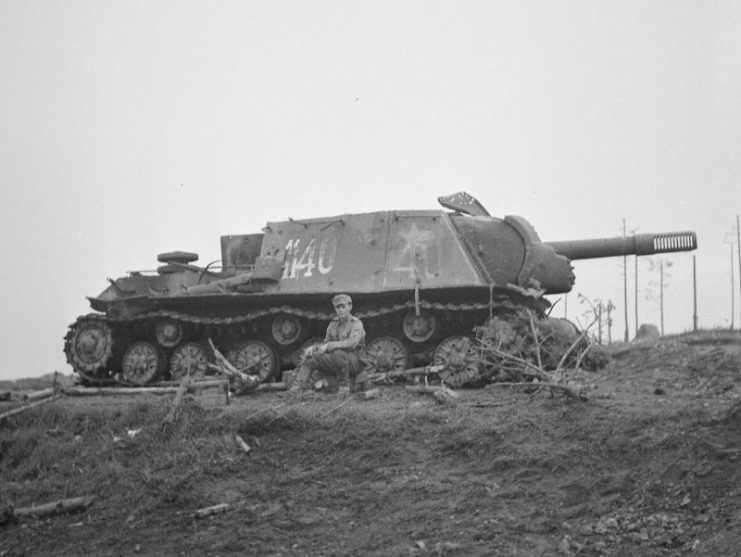
The words of Major Sankovsky, commander of one of the antitank batteries of the 13th Army:
«…a forty-kilogram projectile of any type, successfully launched from an SU-152, and later from an ISU-152, struck everyone. Even a high-explosive shell sent at a Ferdinand, without penetrating its armor, was nevertheless able to shake it to the ground, the German SAU’s gun was torn from the anchorages, and the crew lost the ability to navigate. There was only one thing left; this is to send this elephant for repairs, and the crew, either to the hospital, or to the madhouse …»
The ISU-152 had a four-stroke V-12 diesel engine with 520 hp. Inside there were three fuel tanks, and outside there were four additional fuel tanks not connected with the fuel system of the engine.
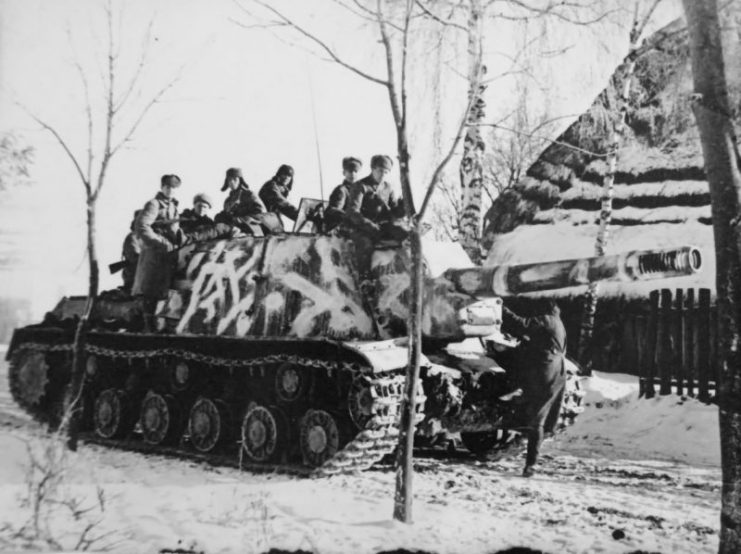
At the beginning of 1944, due to the lack of ML-20s guns, production of the ISU-152 began to be decline. To remedy this, the plant in Sverdlovsk for ISU-152s instead installed the A-19 gun, a 122mm version. This was designated as Object 242/ISU-122.
ISU-152 along with SU-152 and ISU-122 were used in separate heavy self-propelled artillery regiments (OTSAP). From May 1943 to 1945, 53 of these regiments were formed.
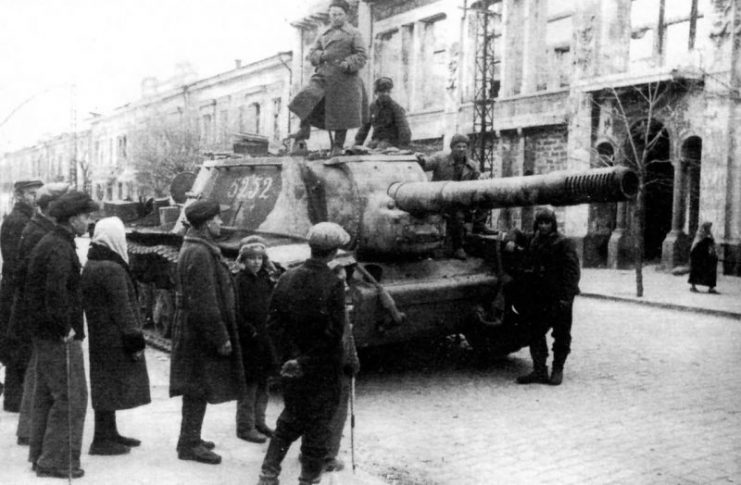
Still in use in 1956, the ISU-152 was used to suppress the Hungarian uprising. The greatest effectiveness of ISU-152 was combating snipers and insurgents hiding in residential houses in Budapest. However, the shots destroyed most of the building together with the sniper.
There are cases when the appearance of a self-propelled gun caused panic among the residents of the house and they, in fear for their lives, drove the hidden snipers and rebels out of the building.
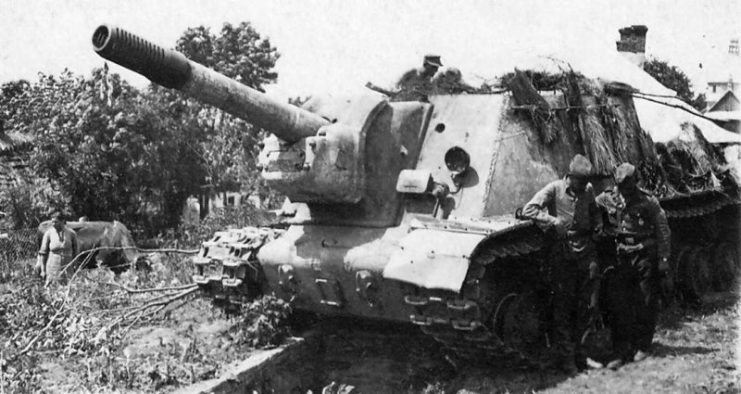
Some ISU-152s were used passively in the Arab-Israeli wars. But they played the role of stationary firing points on the banks of the Suez Canal.
Luckily, many of these behemoths remain today located at various museums and exhibits throughout the former Soviet Union and in Europe.
More Photos
